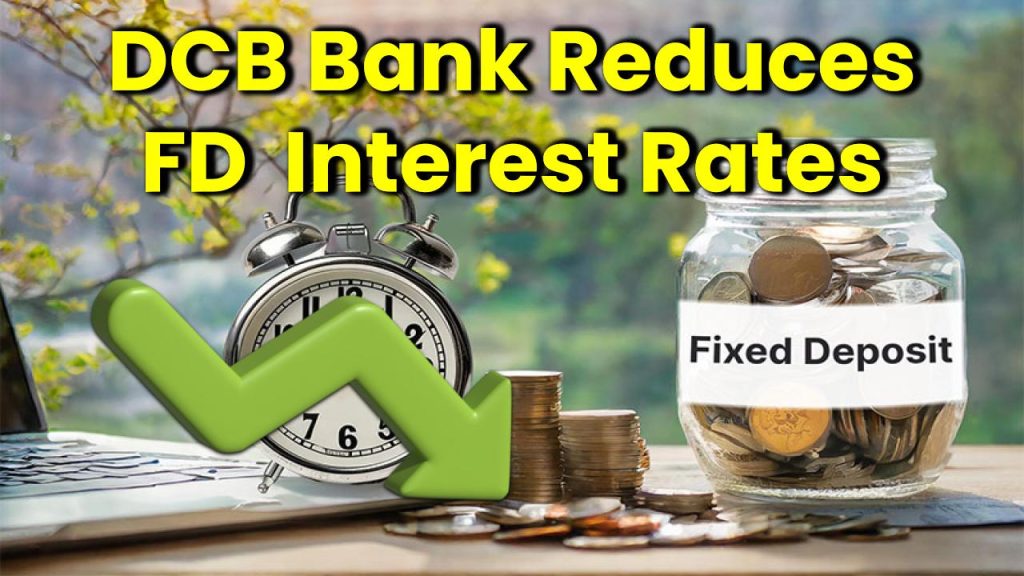
The financial sector is abuzz with the latest move by DCB Bank, which has reduced its fixed deposit (FD) interest rates in response to the Reserve Bank of India (RBI) cutting the repo rate by 25 basis points. This decision impacts depositors, investors, and market trends, making it crucial to understand the reasons behind the change, its implications, and how to navigate the shifting financial landscape.
DCB Bank Reduces Fixed Deposit Interest Rates
| Key Points | Details |
|---|---|
| RBI Repo Rate Cut | Reduced by 25 basis points to 6.25% |
| Effective Date | February 14, 2025 |
| DCB Bank FD Rate Reduction | Up to 65 basis points across tenures |
| General Public FD Rates | 19-20 months: 7.40%, 37-38 months: 7.85% |
| Senior Citizens FD Rates | 19-20 months: 7.90%, 37-38 months: 8.35% |
| Impact | Lower returns for new fixed deposits, existing deposits unaffected |
| Official Source | DCB Bank Website |
The DCB Bank FD rate cut is a direct result of the RBI’s monetary policy adjustments. While this means lower returns on new deposits, investors can explore alternative fixed-income options to maximize earnings. By understanding the broader impact of interest rate changes, you can make smarter financial decisions in this evolving economic landscape.
Why Did DCB Bank Cut Fixed Deposit Rates?
When the RBI reduces the repo rate, banks often follow by adjusting deposit and lending rates. The repo rate is the interest rate at which banks borrow money from the RBI. A lower repo rate means cheaper borrowing for banks, leading to a downward adjustment in FD interest rates.
Key Reasons for Rate Reduction:
- Lower cost of funds for banks – With a reduced repo rate, banks pay less to borrow funds and pass on the reduction to depositors.
- Encouragement for lending – Lower FD rates push investors towards other investment avenues, boosting economic activity.
- Aligning with RBI’s monetary policy – A rate cut indicates the central bank’s focus on stimulating economic growth by making borrowing more attractive.
see also: FD interest rates cut! Big update for investors
Revised Fixed Deposit Interest Rates: What You Need to Know
For General Public:
| Tenure | Previous Rate | New Rate |
|---|---|---|
| 19-20 months | 8.05% | 7.40% |
| 26-37 months | 8.05% | 7.50% |
| 37-38 months | 8.05% | 7.85% |
| 38-61 months | 8.55% | 7.90% |
For Senior Citizens:
| Tenure | Previous Rate | New Rate |
|---|---|---|
| 19-20 months | 8.55% | 7.90% |
| 26-37 months | 8.55% | 8.00% |
| 37-38 months | 8.55% | 8.35% |
| 38-61 months | 8.55% | 7.90% |
How This Affects Fixed Deposit Holders
- Existing FD holders: Your current FD will continue earning the interest rate agreed at the time of deposit.
- New FD investors: You will receive lower interest rates compared to before.
- Alternative investments: Consider debt funds, government bonds, or other fixed-income instruments for potentially better returns.
What Should Investors Do Now?
If you’re an existing FD investor, you don’t need to worry as your locked-in interest rate remains unchanged. However, if you’re planning a new deposit, consider these strategies:
1. Ladder Your Fixed Deposits
Instead of investing all your money in a single FD, split your investment across multiple tenures. This way, you can benefit from future rate hikes.
2. Explore Other Investment Avenues
Given the lower FD rates, you might want to diversify into debt mutual funds, bonds, or hybrid instruments that provide better risk-adjusted returns.
3. Opt for Senior Citizen FDs (If Eligible)
Senior citizens continue to enjoy premium rates on FDs. If you qualify, consider locking in higher rates before further reductions occur.
4. Consider Corporate FDs or Small Finance Bank Deposits
Some corporate FDs and small finance banks still offer higher rates than traditional banks. However, ensure they are creditworthy and regulated by the RBI before investing.
5. Keep an Eye on Future RBI Policy Announcements
Since repo rates can fluctuate based on economic conditions, staying informed about RBI’s monetary policies can help you make timely investment decisions.
How RBI’s Rate Cut Impacts the Broader Economy
A repo rate cut affects borrowing, spending, and investment trends in the economy. Here’s how:
- Home loans, car loans, and personal loans become cheaper → Boosts consumer spending.
- Businesses can borrow at lower rates → Encourages expansion and job creation.
- FD rates decline → Investors shift towards market-linked instruments.
- Stock market rally → Lower interest rates attract more investment into equities.
See also: Post Office Scheme: You will get ₹4,20,470, you just have to deposit this much money?
DCB Bank Reduces FD Interest Rates FAQs
1. Why did DCB Bank lower its fixed deposit interest rates?
DCB Bank reduced FD rates in response to the RBI’s repo rate cut, which makes borrowing cheaper for banks and influences deposit rates.
2. How does this impact my existing FD?
Your existing FD remains unaffected, and you will continue to earn the interest rate agreed upon at the time of deposit.
3. Are there alternatives to fixed deposits for higher returns?
Yes, consider debt mutual funds, government bonds, small finance banks, or corporate FDs for better yields.
4. Can I still get high FD interest rates?
Some small finance banks and NBFCs offer higher FD rates than traditional banks, but ensure they are RBI-regulated.
5. What is the safest investment option after FD rate cuts?
If safety is a priority, government-backed schemes like PPF, SCSS, and RBI bonds remain secure choices.











